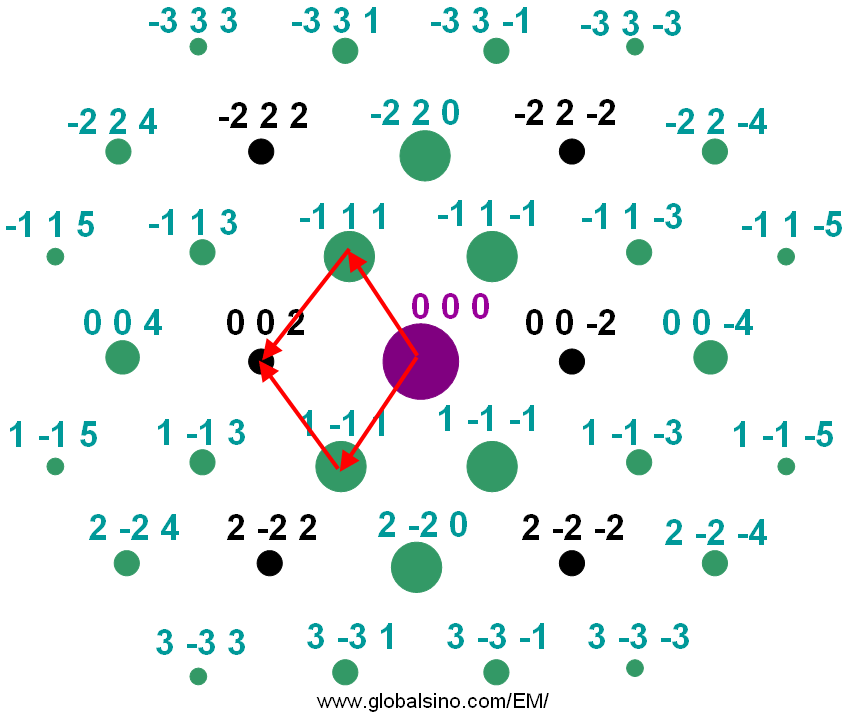

The factor of 12 agrees with the model proposed as well. So the larger unit cell structure shows up with smaller size in the diffraction space. This makes sense because LEED images in reciprocal space. I understand that and in fact with some better resolution images I have even measured the spacing of the smaller hexagon and you find that its roughly 12 times less than the spacing of the ruthenium peaks. Every article I read about the graphene ruthenium system simply says the smaller hexagon indicates the moire pattern that I described above. Now it can be seen in this inverted image that surrounding each primary ruthenium first order diffraction peak there is a smaller hexagon of diffraction peaks. Their spacing in the LEED pattern corresponds to roughly 2*pi divided by the ruthenium lattice constant. Those are the 6 dark points on the outer edge of the image making a large hexagon. So what you are seeing is the electron source in the center surrounded by the first order diffraction peaks from ruthenium (circa 60eV). I have inverted the color and adjusted the levels because my camera phone doesn't pick up the lighter diffraction spots very well. For instance a standard picture of the system can be seen here: When graphene is grown atop ruthenium and then looked at with LEED, evidence of the moire pattern can be seen. The periodic modulation of the graphene sheet causes can be mapped to a super-structure unit cell size of (12x12) graphene unit cells atop (11x11) ruthenium unit cells. For simplicity I will only choose one such proposed structure. The actual periodic superstructure that arises is not known exactly or rather there have been multiple reports of very similar structures that reproduce various experimental results quite accurately. The graphene layer tends to adopt a corrugated structure to better match the substrate lattice. Thus what forms is known as a moire pattern. Thus when the graphene is atop the ruthenium you have two hexagonal lattices on top of one another with slightly mismatched lattice constants. Graphene has a hexagonal lattice (lattice constant = 2.46 angstrom) ruthenium had a hexagonal lattice (lattice constant = 2.70 angstrom) Specifically I am interested in better understanding the pattern shown when graphene is grown atop ruthenium. The method is demonstrated by experiments on several materials, but particularly on germanium and gallium-arsenide specimens since the similarity of these materials exemplifies the sensitivity of the technique.I have a question about how/why/where moire patterns show up in low energy electron diffraction (LEED).īrace yourselves for an incoming wall of text to describe my simple question By using the tables, crystal point groups can be obtained from convergent beam or bend contour patterns. These tables assume the symmetric Laue condition and ignore the presence of irreducible lattice translations normal to the slab. A graphical representation of each diffraction group is given, together with tables showing how the diffraction groups are related to the specimen point groups and under certain assumptions to the crystal point groups. We find that the pattern symmetries may be described by thirty-one diffraction groups and that each of these diffraction groups is isomorphic to one of the point groups of diperiodic plane figures and to one of the thirty-one Shubnikov groups of coloured plane figures. The diffraction of fast electrons by a thin parallelsided slab has been studied by group theory and by a graphical construction. The convergent beam and bend extinction contour techniques of electron microscopy are capable of providing much more information than can be obtained from conventional diffraction patterns and it is the objective of this work to examine the symmetry properties of each of these patterns.


 0 kommentar(er)
0 kommentar(er)
